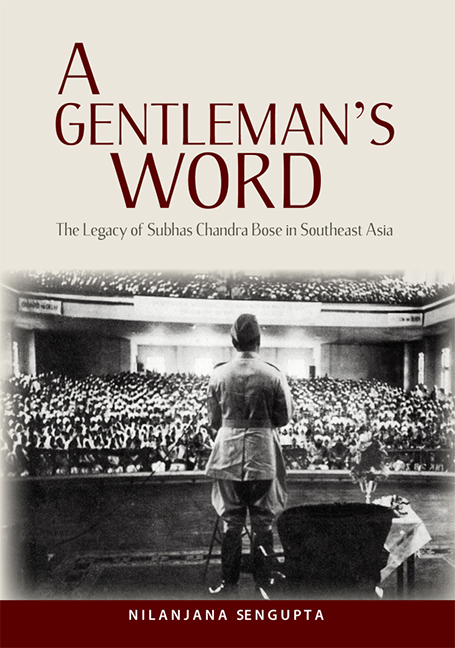Book contents
- Frontmatter
- Dedication
- Contents
- Foreword by S. R. Nathan
- Message by K. Kesavapany
- Message by Joyce C. Lebra
- Preface
- Acknowledgements
- 1 A Journey: A Dream
- 2 An Outsider in the Crescent and a Trial for Treason
- 3 End of a War, Beginning of Others
- 4 We are the Multitudes
- 5 “They Have Done Enough at Home”: Escape from the Shadows
- Bibliography
- Index
- About the Author
- Plate Section
1 - A Journey: A Dream
Published online by Cambridge University Press: 21 October 2015
- Frontmatter
- Dedication
- Contents
- Foreword by S. R. Nathan
- Message by K. Kesavapany
- Message by Joyce C. Lebra
- Preface
- Acknowledgements
- 1 A Journey: A Dream
- 2 An Outsider in the Crescent and a Trial for Treason
- 3 End of a War, Beginning of Others
- 4 We are the Multitudes
- 5 “They Have Done Enough at Home”: Escape from the Shadows
- Bibliography
- Index
- About the Author
- Plate Section
Summary
“… Come my friends,
‘Tis not too late to seek a newer world.
… To sail beyond the sunset, and the baths
Of all the western stars, until I die.”
— Ulysses, Alfred TennysonPRELUDE
On 9 February 1943 Subhas Chandra Bose embarked on an undisclosed journey on a submarine, as a guest of the German navy. As he set off on this eastward journey he was unaware that he would not survive the war or that he was swiftly moving towards what would turn out to be the final phase of his life. His sole companion was an aide, Abid Hasan, a young nationalist who had joined Bose in his military mission in Berlin and would continue to work closely with him in Southeast Asia. Like other young, educated men who had thrown in their lot with Bose and the Indian nationalist cause in Europe, Hasan, a Hyderabadi Muslim, was part of a small, politically inclined Indian diaspora. Their journey together would span the next three months, first in German and then Japanese submarines. Hasan writes that as he stepped aboard the German U-boat, the envisaged “romance” of travelling by a submarine fast dissipated: Bose was allotted a bunk in an unenclosed recess in the passage and the “stench of diesel” permeated the air. They travelled through the North Sea, the strait south of Iceland, navigated around the Cape of Good Hope and after a hazardous submarine-to-submarine transfer off the coast of Madagascar, finally landed at an isolated islet near Sumatra on 6 May 1943. The trajectory would take Bose half way across the globe and he would arrive at Southeast Asia to spearhead the Indian nationalist struggle and lead the community to a new age of political consciousness.
This was not Bose's first expedition to Southeast Asia. In 1925 he had been detained at Mandalay, as a political prisoner of the British Raj — one of the many terms of captivity he served as an integral part of his tumultuous political career. The Mandalay prison, where Bal Gangadhar Tilak had spent six long years of captivity, was notorious in its reputation. Bose, confined in this wooden prison for over two years, was not only exposed to the dust and storms of Burma but also caught a first-hand glimpse of the Burmese people.
- Type
- Chapter
- Information
- A Gentleman's WordThe Legacy of Subhas Chandra Bose in Southeast Asia, pp. 1 - 37Publisher: ISEAS–Yusof Ishak InstitutePrint publication year: 2012



